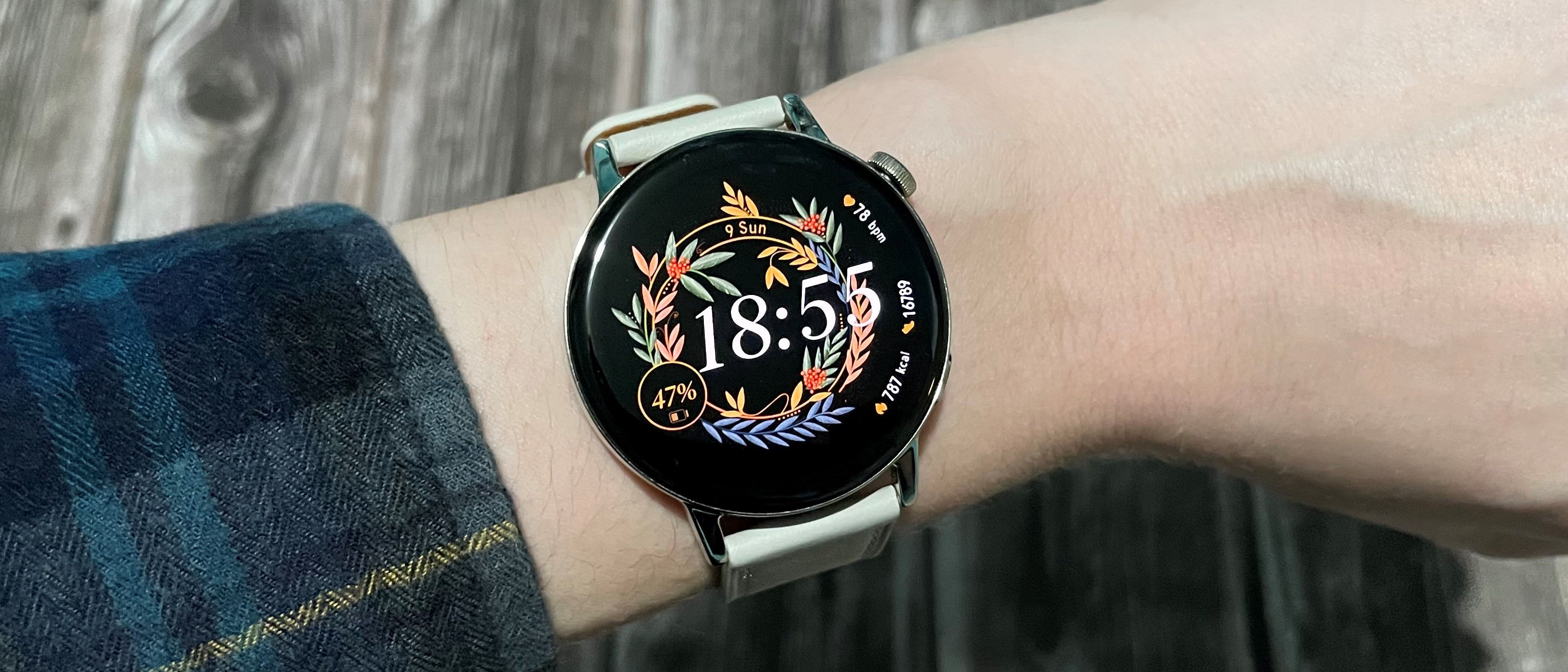TechRadar Verdict
The Huawei Watch GT 3 is a superb fitness oriented smartwatch that offers great performance and extremely impressive battery life for a very reasonable price. The biggest downside is that the watch is unlikely to be available to buy in the US any time soon. If you live elsewhere, it should definitely be on your shortlist of smartwatches to consider.
Pros
- +
Crisp, bright display
- +
Up to 14-day battery life
- +
Accurate biometric sensors
- +
Responsive and fast
Cons
- -
Not available in US
- -
Android app must be installed via Huawei AppGallery
- -
No contactless payments
Why you can trust TechRadar
Two-minute review
The Huawei Watch GT 3 is a fitness-oriented smartwatch that looks great, and feels fast and responsive thanks to a new processor. It's packed with an impressive array of health tracking tools too, and offers truly remarkable battery life – particularly if you opt for the larger 46mm version.
That longevity doesn't come at the expense of features, and the watch's array of biometric sensors track heart rate, SpO2, skin temperature, stress, and sleep. Huawei has given its optical heart rate monitor an upgrade this time around, and the results are impressive; changes are detected quickly during intense interval training sessions, and accuracy rivals that of dedicated running watches.

There's support for five satellite navigation systems as well, which should make for more accurate location tracking in areas where there's a limited line of sight between you and the sky. In our tests it wasn't quite as accurate as Garmin's GPS when it came to mapping out our pre-measured route, but was definitely sufficient for recreational running.
The watch supports over 100 sports (both indoor and outdoor) but really comes into its own when you're running. The 'AI trainer' tool lets you set a goal and a deadline, and then creates a training plan that adapts on the fly according to your performance. It's a well executed tool that's easy to use, and is particularly well suited to new runners wanting to achieve their first milestones.
The watch's on-board microphone is also a real boon for runners, allowing you to make and receive calls via Bluetooth without reaching for your phone. There's no eSIM, so you can't use this feature without your handset, but it's extremely simple to use and particularly helpful in emergencies.
It's a shame that there's no support for contactless payments though. It would be a natural fit for this type of general purpose watch, and we really felt its absence during testing.
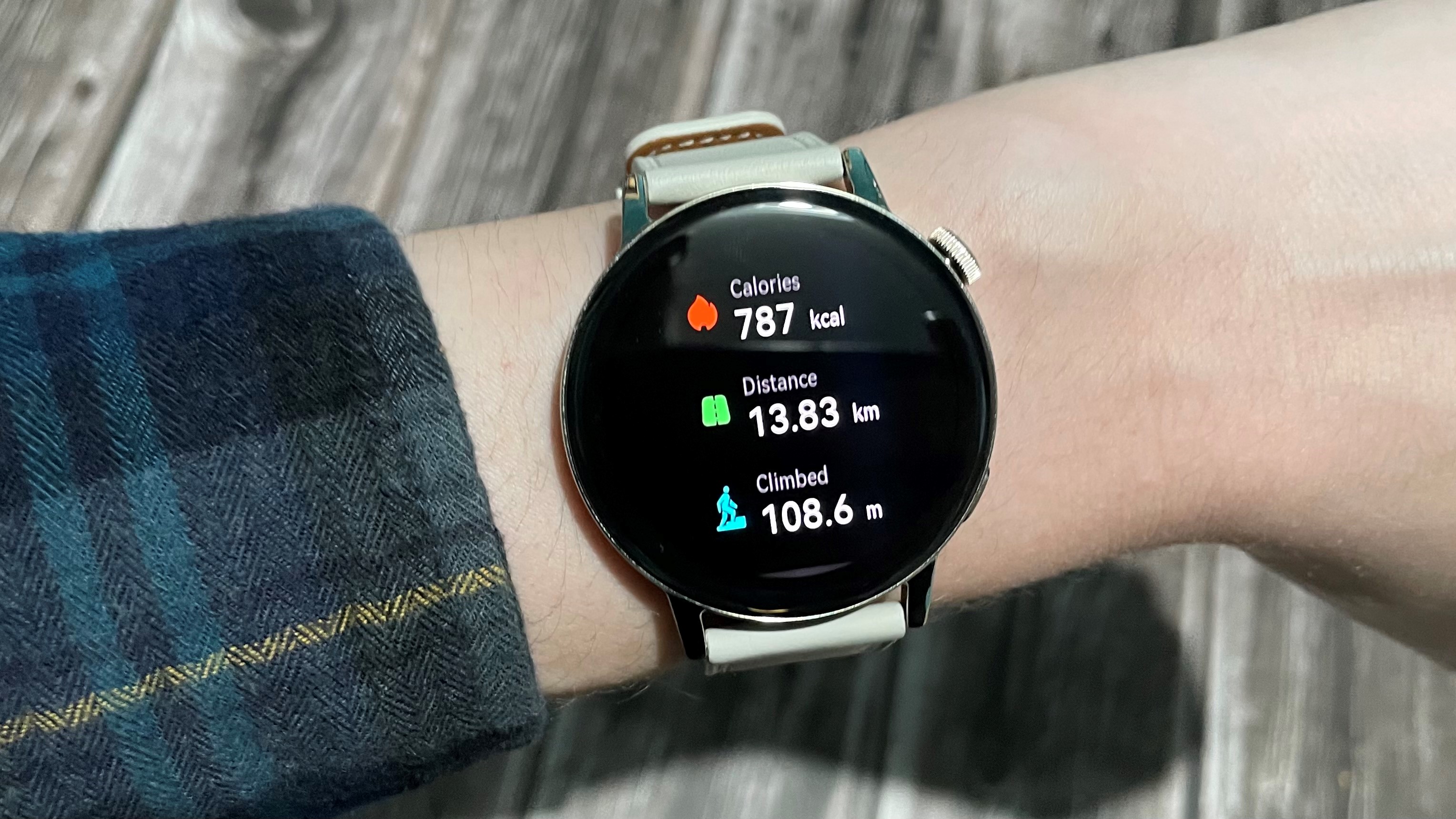
The Huawei Health smartphone app is available for both Android and iOS, but in order to get the latest Android version we had to download it through the Huawei AppGallery rather than direct from Google Play. It was a minor inconvenience, but one we'd rather avoid.
Sign up for breaking news, reviews, opinion, top tech deals, and more.
Overall, this is an excellent device that takes the best features from Huawei's earlier models and puts them together in a stylish, refined package. If you're on the lookout for a great all-round smartwatch, it's easy to recommend – particularly at such a reasonable price. It's only a shame that it's unlikely to launch in the US.
Price and release date
The Huawei Watch GT 3 was released in November 2021. Prices range from £209.99 (about $290 / AU$400) for the 42mm version with a silicone band, through to £299.99 (about $410 / AU$570) for the 46mm version with a stainless steel link bracelet.
That’s a small price hike from the Huawei Watch GT 2, which started at £179 (about $240 / AU$340) for the 42mm model, but it’s still one of the most affordable smartwatches of its type.
At the time of writing its Australian release date has yet to be announced, and the watch is unlikely to be available in the US.
Design
The Huawei Watch GT 3 is an attractive smartwatch with a bright AMOLED touchscreen display, set in a lightweight stainless steel and plastic case. It’s topped with toughened glass, with a curved edge that creates the illusion of extra screen real estate. It comes with a variety of strap options, including silicone, metal, and leather (shown here) at different price points.
The case features a digital crown that can be pressed to select the current menu option, or rotated to scroll and zoom. Tapping the single button underneath the crown will take you back to the previous menu.
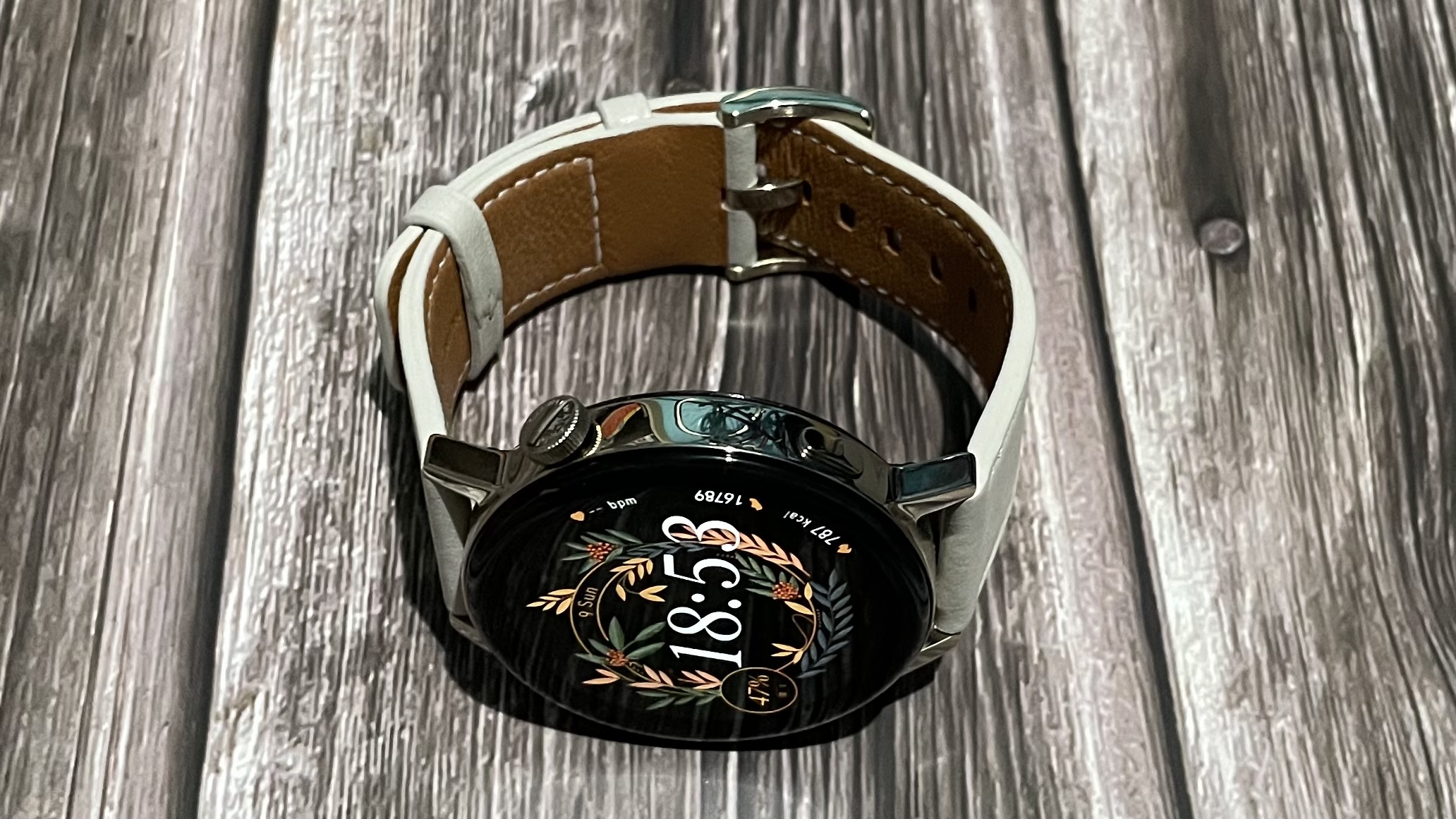
The watch comes in two sizes: 42mm (which we tested here) and 46mm. The larger version has a 1.43in display with a case that’s 11mm thick, and weighs approximately 42.6g without the strap. The smaller model has a 1.3in display with a 10.2mm thick case, and weighs about 35g without the strap.
That’s pretty light for a smartwatch this size. For comparison, the Apple Watch 7 comes in 41mm and 45mm versions, both of which are 10.7mm thick. The smaller version weighs 42.3g if you choose the stainless steel case, while the larger model weighs 51.5g.
The Watch GT 3 is supplied with a wireless induction charger that connects magnetically, or it can be powered up using your phone if you’re on the move.
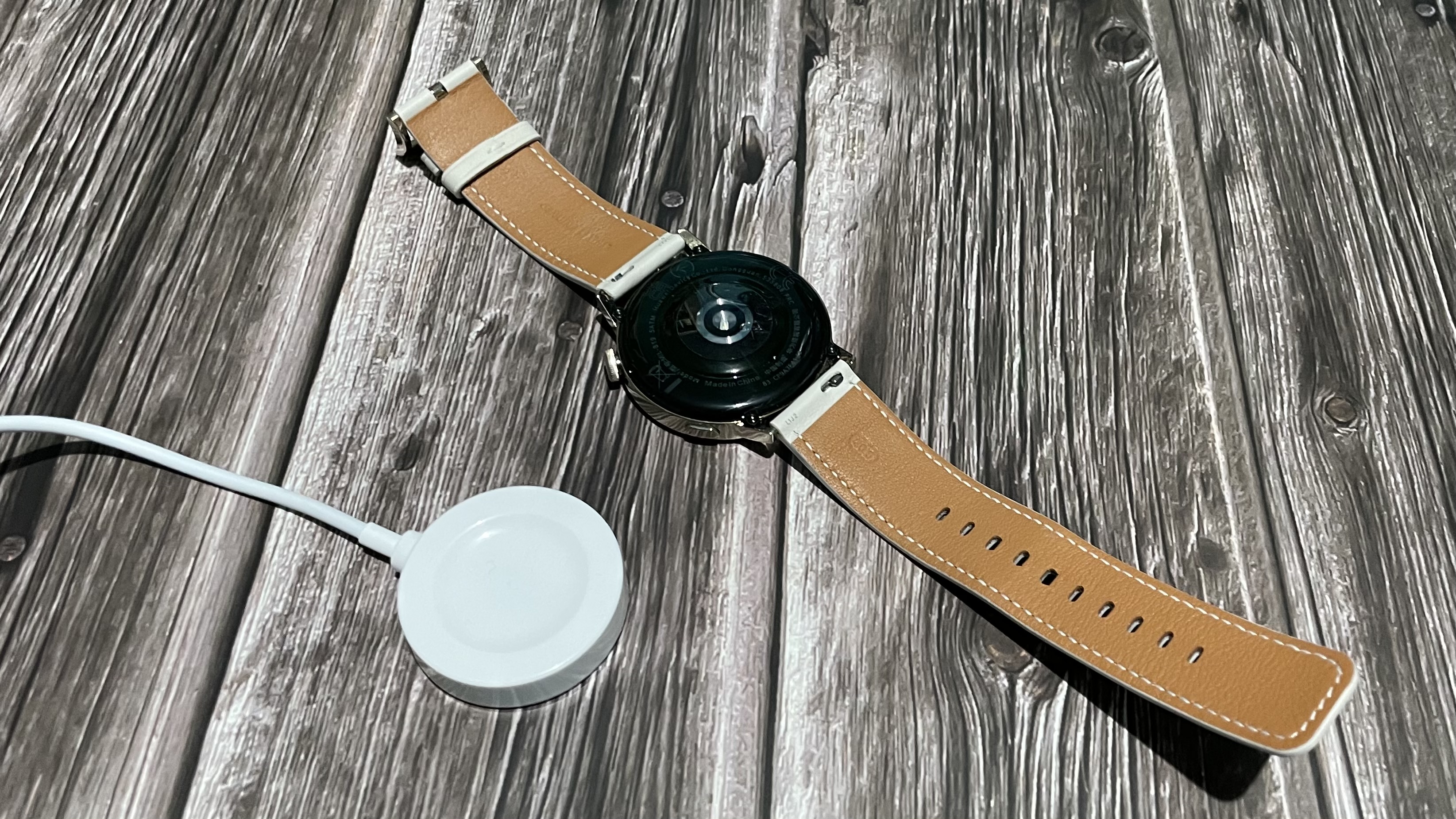
Features
The Huawei Watch GT 3 is a sporty smartwatch with impressive fitness tracking chops. It offers location tracking via GPS, Beidou, GLONASS, Galileo and QZSS – an impressive range of satellite constellations that help pinpoint your location even in built-up areas, remote locales, or near steep rock faces that create a reduced line of sight between you and the open sky.
There’s an updated heart rate monitor (which we’ll discuss in more detail shortly), plus an SpO2 sensor. You can also perform spot checks any time, or choose to have the sensor enabled all day, though the latter option will have a noticeable impact on battery life. If you’ve chosen the 42mm model, with its reduced battery capacity, you may want to keep it disabled.
There’s also an SpO2 sensor that can be used continuously, or to perform spot checks – a welcome option that helps extend battery life – plus stress tracking and a skin temperature sensor. That’s something you won’t find on the Apple Watch 7, and it’s starting to look doubtful that the Apple Watch 8 will offer it either, so we’re glad to see it here.
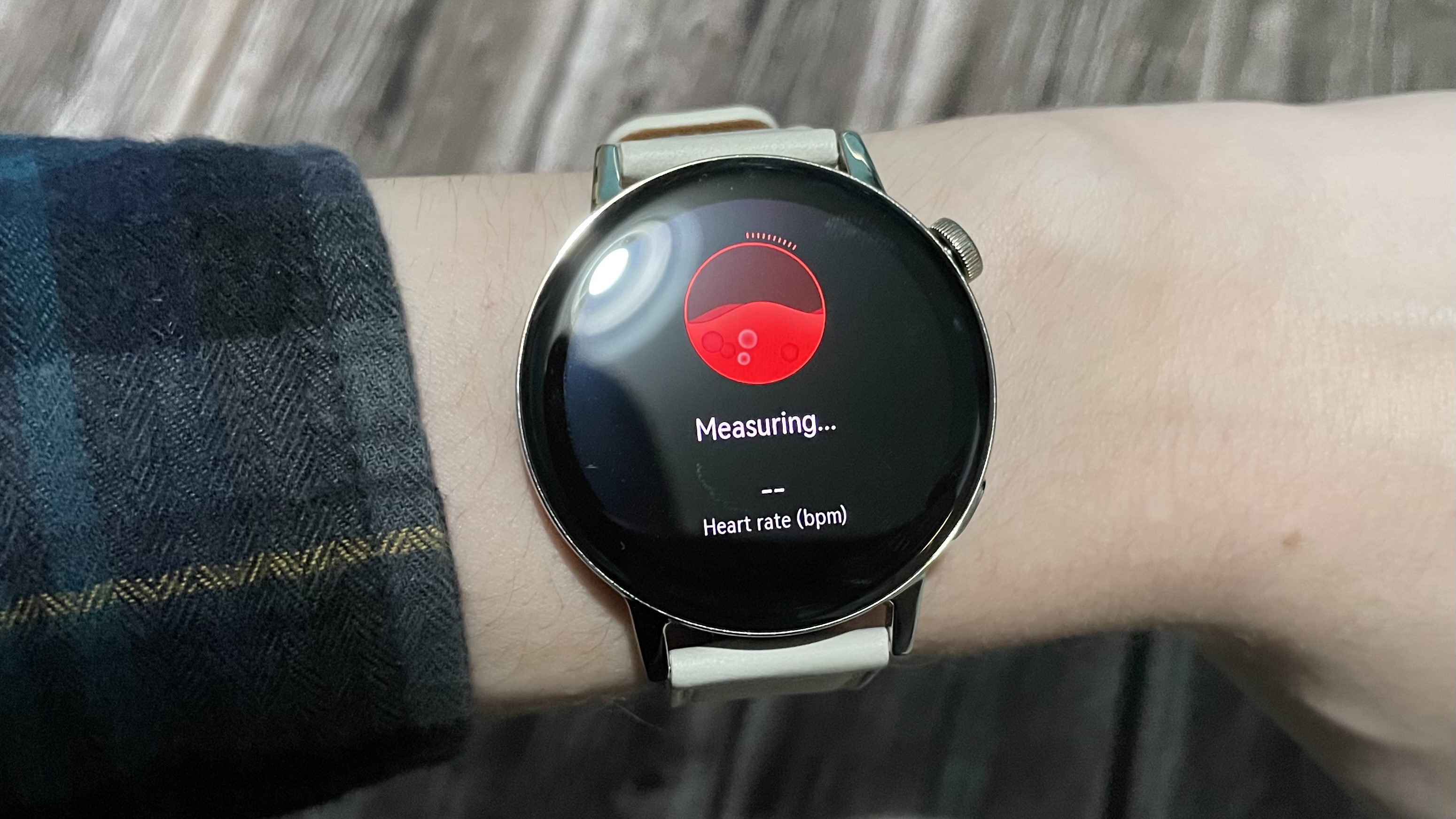
The only thing lacking is an ECG sensor to detect signs of atrial fibrillation. If that’s a dealbreaker for you, then we suggest checking out the similarly priced Fitbit Charge 5 as an alternative.
Like the recently released Garmin Venu 2 Plus, the Huawei Watch GT 3 has a microphone that allows you to receive calls from your wrist. Unlike Garmin’s watch, however, the Watch GT3 also lets you initiate calls when connected to your phone’s address book, not just answer them. The watch doesn’t have its own SIM, so you won’t be able to make a call without your handset within Bluetooth range, but it’s an excellent feature for both convenience and safety when you’re exercising alone outdoors.
The Huawei Watch GT 3 supports music, too; you can save your own songs to the watch (supported formats include MP3, AAC, WAV, FLAC, M4A and OPUS) or use it as a remote to control music playback on your phone.

One feature that's conspicuous by its absence, however, is contactless payments. That's a real shame, and puts Huawei on the back foot compared to the likes of Apple, Fitbit, Garmin and Samsung.
Battery life
The biggest difference between the two watch sizes is the battery life – the 46mm version lasts up to 14 days on a single charge, while the 42mm model lasts seven days.
When we used the 42mm model with continuous SpO2 deactivated and tracked an average of one workout per day, we found that the battery needed recharging after six days. That’s very respectable for a sensor-packed AMOLED smartwatch. To put it into context, the Fitbit Charge 5 is smaller and less feature-rich, but consumes the same amount of power in everyday use.
Battery life for the 46mm version is nothing short of remarkable; TechRadar’s sister site T3.com tested the larger model and only had to charge it twice in the space of two weeks. We typically prefer a smaller watch face, but we’re willing to trade up for the larger version for the extra capacity.

Fitness tracking
The Huawei Watch GT 3 has over 100 workout tracking modes, but running is where it really shines, with tools that’ll appeal to all abilities.
Location tracking proved reasonably accurate on our pre-measured course, plotting our route to within 300 meters. Similarly priced Garmin watches plotted the course with greater accuracy, but for a recreational runner it’ll be perfectly acceptable.
There’s also a nice social element to the mapping if want to share your latest route with members of your running club – with a couple of taps in the Huawei Health app, you can create a video that plays back your route as a video, ready to send via your messaging app of choice.
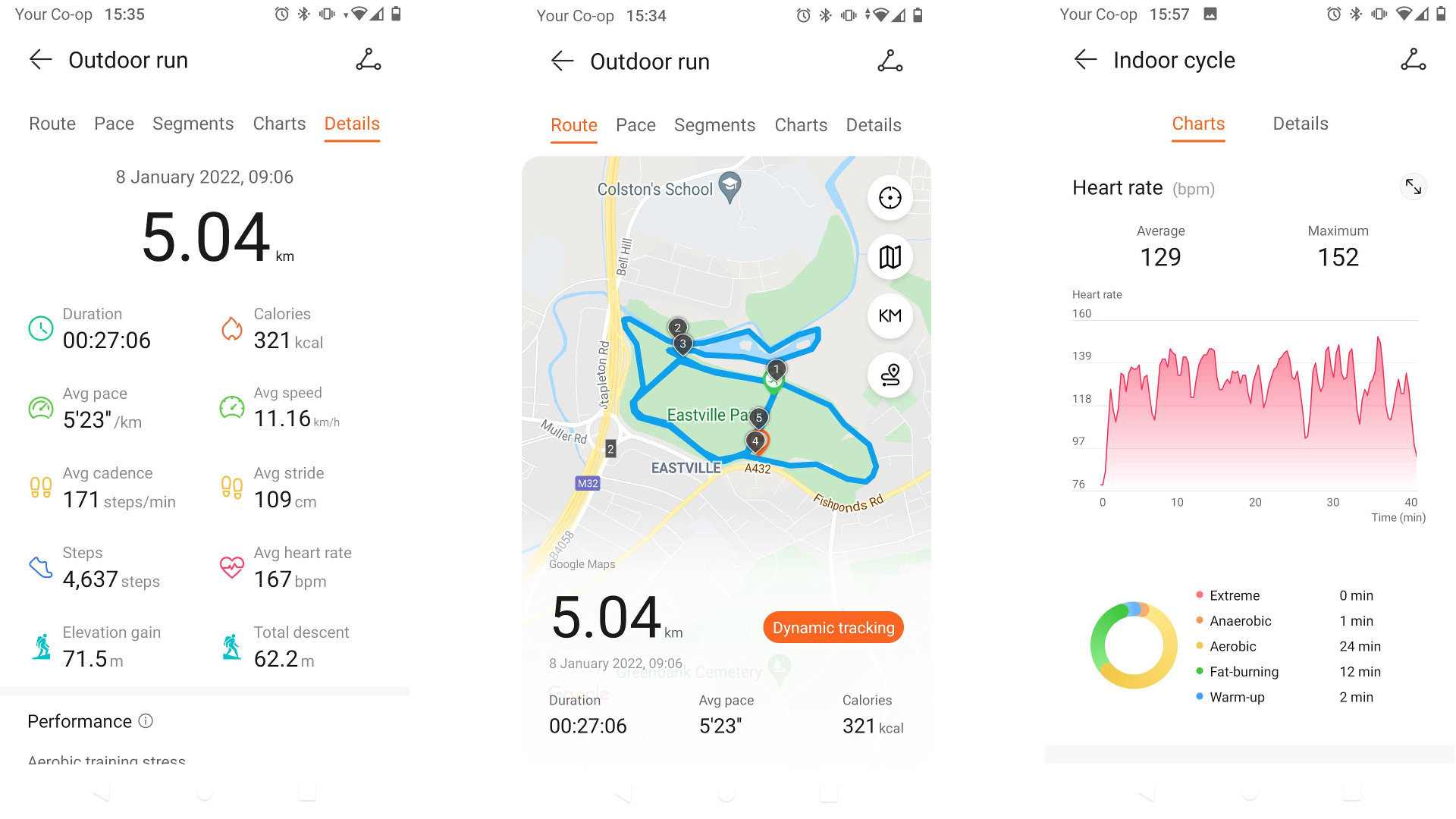
After each workout you’ll be presented with an estimate of how long it’ll take you to recover and be ready for your next session. This is a feature that’s becoming increasingly common on running watches, and is a real boon for anyone who’s relatively new to working out, and wants to make sure they’re not over- or under-training.
One of the watch’s key features is its ‘AI running coach’, which lets you set a goal in the Huawei Health app, and generates a training plan based on your height, weight, age, current training load, and personal best times. Enter a few key stats, including the date that you want your training to begin and the date of the event you’re preparing for (if appropriate), use a slider to choose how hard you’re willing to push yourself, and pick the days you want to run.
It’s worth nothing that you can’t create a training plan for an event that’s more than four months in the future, which is a shame considering one of the options is marathon training, which realistically takes much longer.

Once that’s done, you can sync the resulting plan with your calendar, and access it through the ‘Courses and plans’ section of the workout app on your watch. Each workout completed will be logged in the app. It’s a very similar tool to the adaptable training plans in Garmin Connect, and both tools analyze your weekly running data and tweak your training plan on the fly accordingly.
In our tests, Huawei’s AI coach kept our custom half marathon plan very easy to begin with, but soon began ramping up the difficulty once it had established a baseline, so don't be disappointed if your first week's training is just a handful of short easy runs.
The Huawei Watch GT 3 has a new and improved optical heart rate sensor, and we found it responded quickly to changes in intensity during tough interval sessions on a spin bike. Results were accurate to within around 5bpm compared with measurements from a chest strap heart rate monitor.
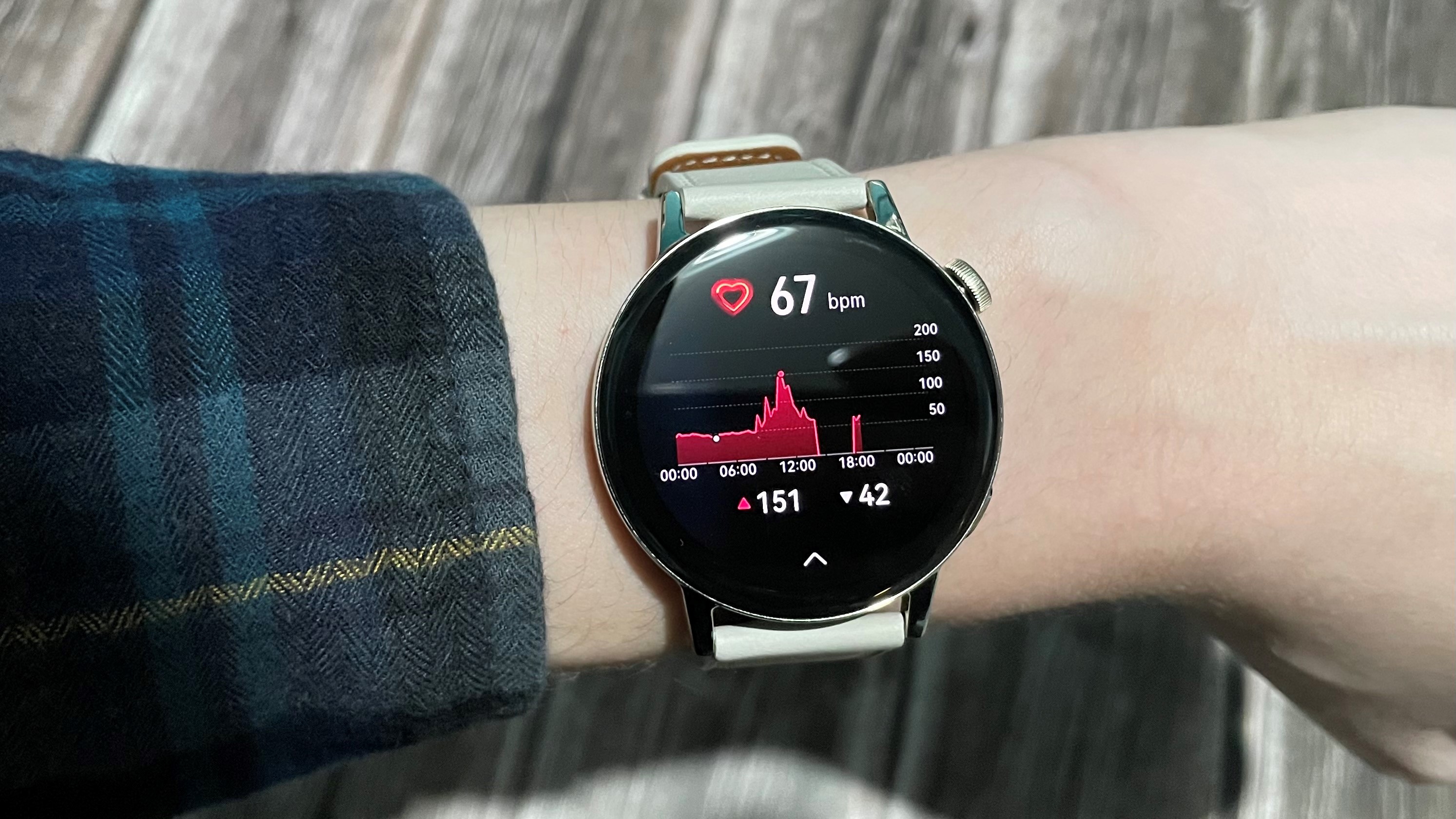
Companion app
The Huawei Watch GT 3 uses the same Huawei Health app as the company’s other fitness trackers, smartwatches, and smart scales. It’s available for both iOS and Android, but we struggled to connect the watch using the version available on Google Play; the watch didn’t appear in the list of compatible devices and the app couldn’t locate it.
After hunting for a solution, we found a recommendation from a Huawei representative on a support forum, who advised downloading Huawei’s own app store, AppGallery, and using that to install Huawei Health. This worked first time, and AppGallery kept the Health app up to date automatically.
The app is simple to navigate, presenting all your recent stats on a clear dashboard that you can view at a glance. Tapping any of these will allow you to drill down into more detailed historic data.
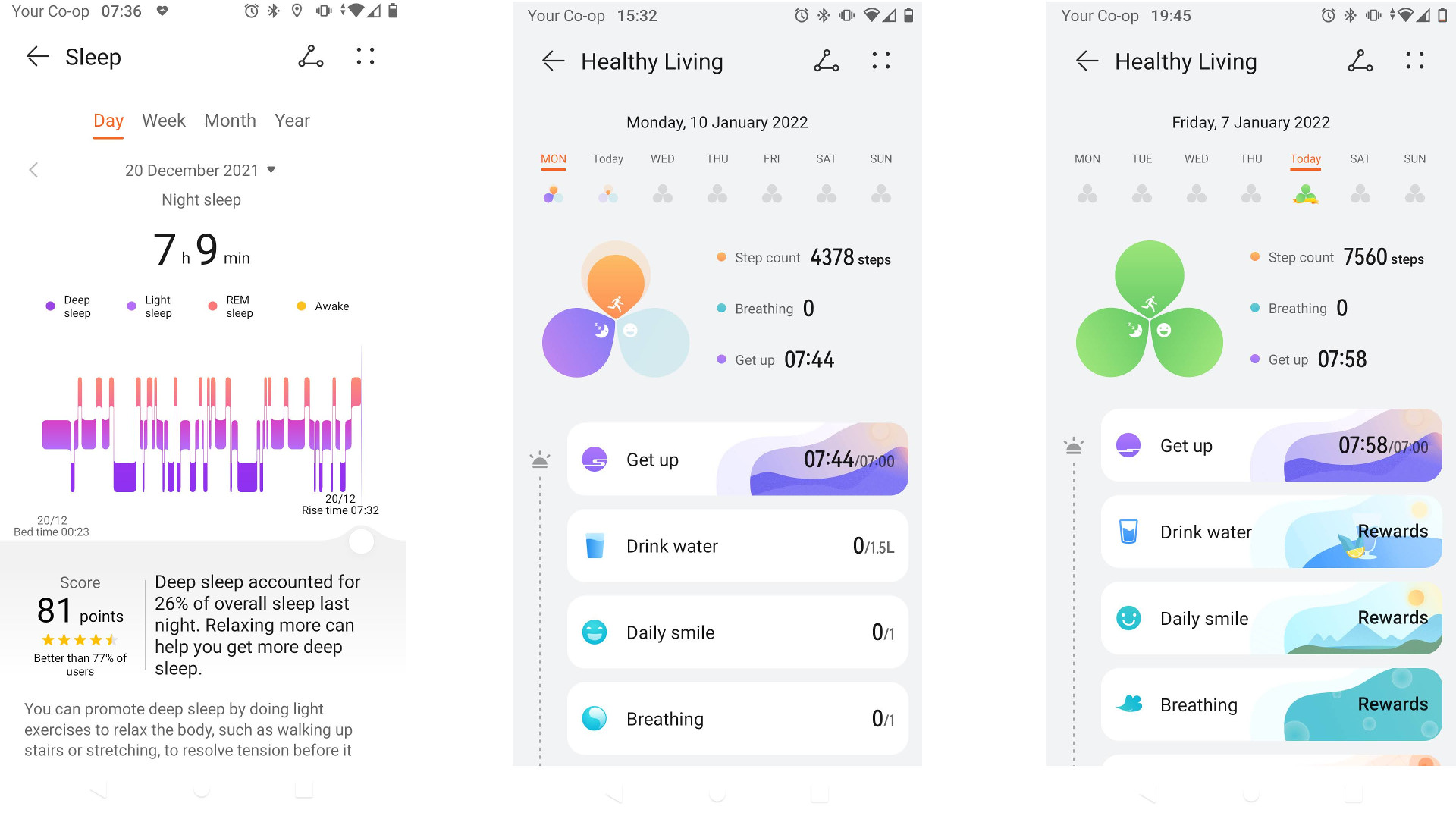
One feature unique to Huawei’s app is the ‘Healthy Living Shamrock’, which is a clover-shaped diagram with leaves representing different goals – step count, mood (breathing exercises) and sleep.
You’re encouraged to set your own personal targets rather than sticking with preset options, which makes the Shamrock genuinely useful as a tool to see how well you’re managing your lifestyle. You can also ask for prompts when it’s time to prepare for bed, take a drink of water, or just smile to get yourself in a better frame of mind.
The Huawei Health app also allows you to customize your watch by downloading additional watch faces and third-party apps. There's a huge range of faces to choose from, though most of them are paid-for (prices in the UK range from 49p through to £4.99).
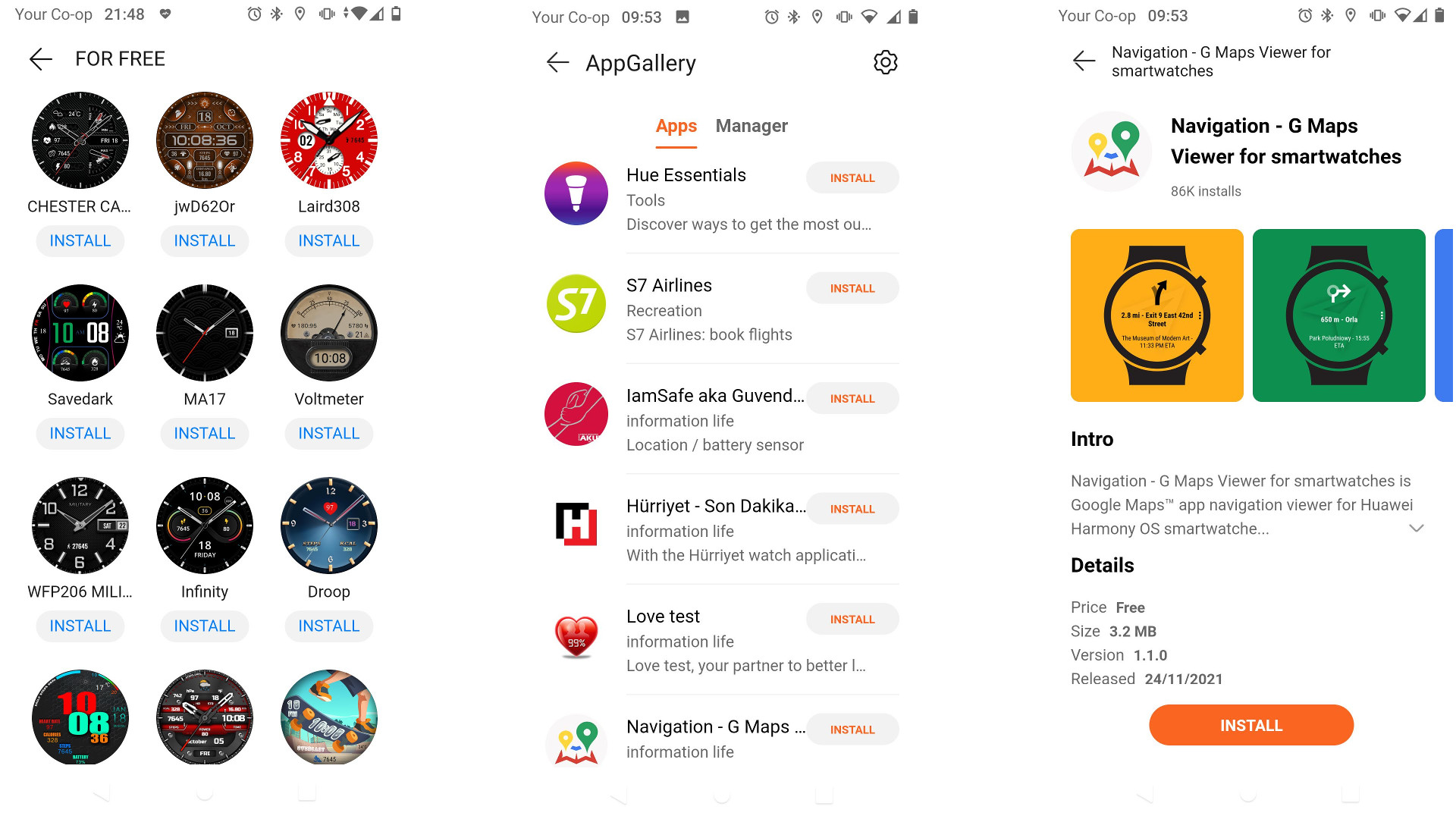
The selection of downloadable apps is fairly limited, but there are some gems that are well worth downloading. The navigation app that makes use of Google Maps is particularly well implemented, providing turn-by-turn directions on your wrist so you don't have to carry your phone in your hand in public, where it might be stolen. At the time of writing, all the third-party apps are free.
We were also pleased to see that all of Huawei's own tools are available free of charge, including the AI training tool. Unlike Fitbit and Amazon, Huawei hasn’t locked certain features behind a subscriber-only paywall, so you get the full experience for the price of the watch alone.
Overall, it’s a well designed app that’s intuitive to use and helps you get more out of your Huawei Watch GT 3. It’s only a shame that downloading the current version isn’t as straightforward as it should be.
First reviewed January 2022
Buy it if
You want an all-purpose watch
The Huawei Watch GT 3 is a great all-rounder with solid fitness features that rival those in dedicated sports wearables.
You hate the hassle of charging
The Huawei Watch GT 3 boasts remarkable battery life (particularly the larger version), so you won't need to worry about charging frequently.
You want a helping hand with training
If you're aiming to run your first race, or want some guidance getting started, the Watch GT 3's training plans and post-workout feedback will give you a good starting point.
Don't buy it if
You want serious training tools
This is a great watch for most recreational runners, and the 'AI coach' is well implemented, but if you've got a long term, specific goal in mind then a sports specific watch from Garmin, Polar or Coros will suit you better (ideally paired with Training Peaks).
You want to link to gym equipment
The Huawei Watch GT 3 offers a good range of indoor workout modes to use with gym equipment, but there's no equivalent of Apple Gymkit for Huawei Health that allows you to connect it directly to workout machines for more accurate tracking.

Cat is TechRadar's Homes Editor specializing in kitchen appliances and smart home technology. She's been a tech journalist for 15 years, having worked on print magazines including PC Plus and PC Format, and is a Speciality Coffee Association (SCA) certified barista. Whether you want to invest in some smart lights or pick up a new espresso machine, she's the right person to help.
